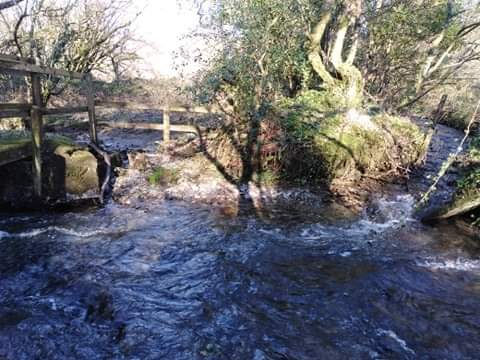Agroforestry Farm Walk
- heather5904
- May 15, 2024
- 3 min read
Updated: May 16, 2024
Looking at examples of Agroforestry and opportunities for your farm

In Glandwr village, North Pembrokeshire lies a pioneering agroforestry project spanning 10 acres. Led by Tom Clare and Jacqui Banks, this project transforms former horse pasture into a sustainable ecosystem blending agriculture and forestry.
In their project, Tom and Jacqui manage sheep, make mycorrhizal inoculants, and provide consultancy services. They're also starting a nursery. Their land features orchards, meadows, and coppice stands. Their Badgerface Torwen sheep graze peacefully alongside trees. This agroforestry system demonstrates how agroforestry and live stock can coexist.
Driven by a commitment to biodiversity, Tom's expertise as a plantsman and Jacqui's grazing management skills shape a thriving ecosystem. Visit their website to learn more about the nursery they're establishing and Chaos Fungorum, a mycorrhizal inoculant.
Photos taken by Amanda Jackson. See her website here.
What is Agroforestry?
Agroforestry is a sustainable land management system that integrates trees or shrubs with crops and/or livestock. It's a holistic approach that combines the principles of forestry and agriculture to optimize productivity, biodiversity, and ecosystem services.
Different Types of Agroforestry:
Hedgerows, Shelterbelts, and Riparian Buffer Strips: These are linear plantings of trees and shrubs along field boundaries, watercourses, or roadsides. They provide a variety of benefits such as windbreaks, erosion control, habitat for wildlife, and improved water quality.
Silvoarable: In silvoarable systems, trees are grown alongside arable crops, providing additional income from timber or non-timber forest products while enhancing soil fertility and biodiversity.
Silvopasture: Silvopasture combines trees, forage, and livestock in the same area, allowing for integrated management of grazing animals and forest production. It offers shade and shelter for livestock, improved forage quality, and carbon sequestration.
Why Do We Need Agroforestry? Agroforestry offers lots of benefits, including increased farm resilience, improved soil health and enhanced biodiversity. By integrating trees into agricultural landscapes, we can address environmental challenges while maintaining productive and profitable farming systems.
TOUR & TALK: THURSDAY JUNE 6TH 10AM
Tom and Jaqui are offering a walk and tour on their land. The session aims to be flexible with time for questions and discussion, covering different styles of agroforestry and opportunities to integrate trees on farm. Tom has excellent knowledge and experience of all things plants. He offers advice and support to farmers and landowners interested in agroforestry and is also a mentor with Farming Connect, Jacqui is a Welsh speaker and will co-host the morning’s session, offering translation if needed.
This event will suit farmers and landowners interested in learning how tees can work for them.
How to Book:
To book your spot for the agroforestry tour, click the button below, which will take you to the Eventbrite booking page. There, you'll also find the full list of workshops and courses offered by the Hwb Dysgu'r Tir project. The land-based skills workshops include green woodwork, soil health workshops, weatherproof farming, and land surveying.

WHILE YOU ARE HERE,
CHECK OUT THE OTHER WORKSHOPS COMING UP WITH HWB DYSGU'R TIR:
Taith Gerdded Amaeth-Goedwigaeth | Agroforestry Farm WalkThu 6 Jun at 10:00
How to make really good compost | Sut i wneud compost gwychThu 13 Jun at 10:00
The Weatherproof Farm with Niels CorfieldWed 19 Jun at 10:00
Llinyn Naturiol / Natural CordageSat 29 Jun at 10:00
BIO FERTILISERS & Garden Amendments | BIOWRTAITH a Gwelliannau i'r ArddThu 25 Jul at 10:00






















Have a need for real intimacy? Our independent Manali Call Girl are at your service. They are alluring and have it all - a beautiful figure, self-assurance, and winning personality. Every kiss and every move is genuine and thrilling, thereby elevating your trip to an exhilarating level.
They ought to avoid canceling their appointments at the last minute. Conversely, they should notify the clients in advance if anything unforeseen occurs. Therefore, it will be feasible to schedule the session afterward.
Escorts Service in Mandi House || Madipur Escorts || Escorts in Panchsheel Park || Partap Nagar Escorts Service || Escorts Service Paschim Vihar